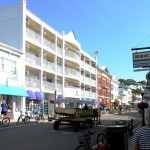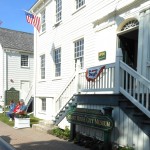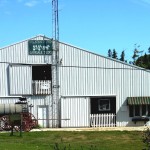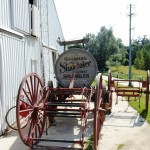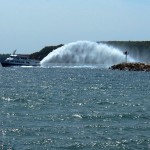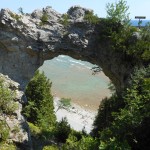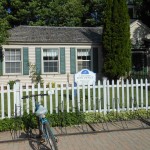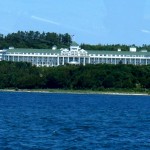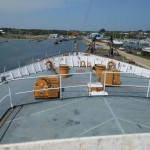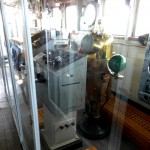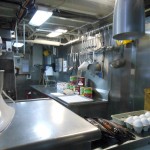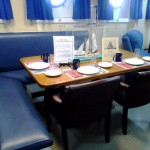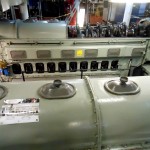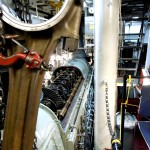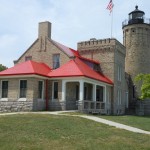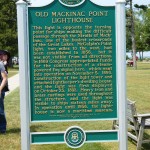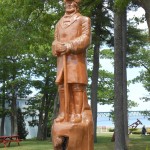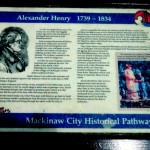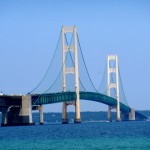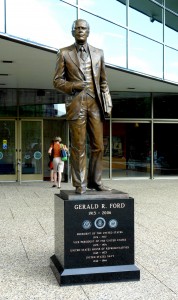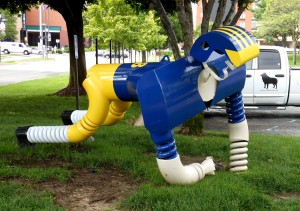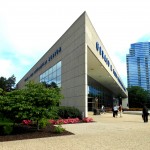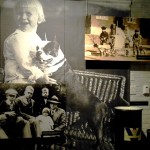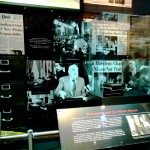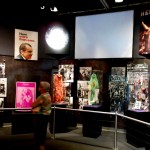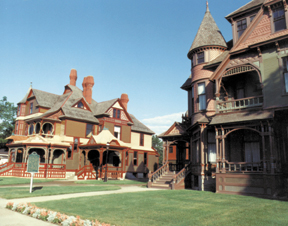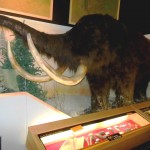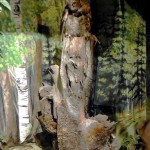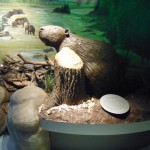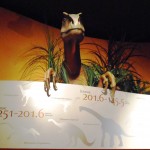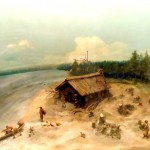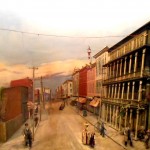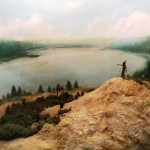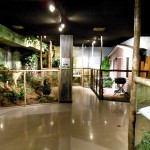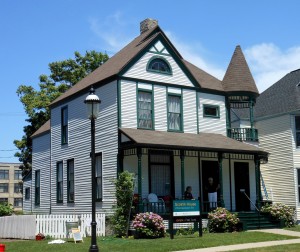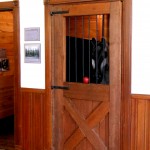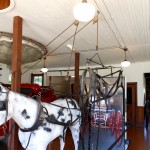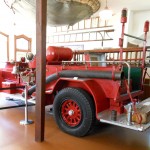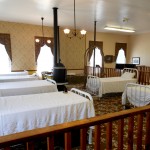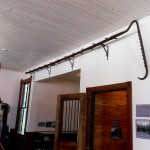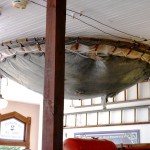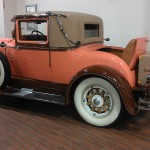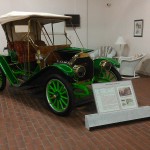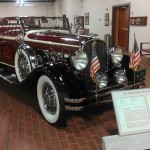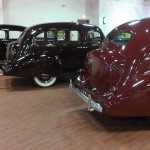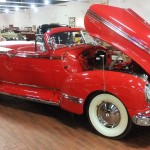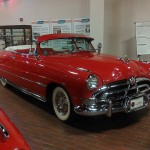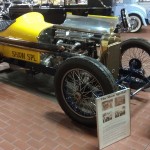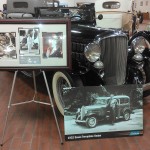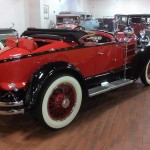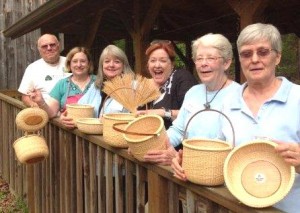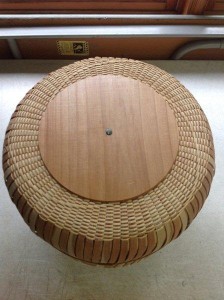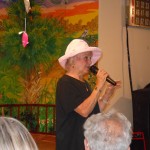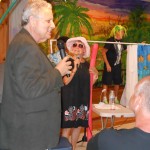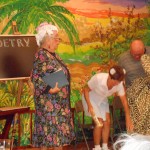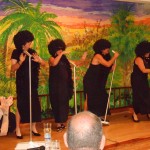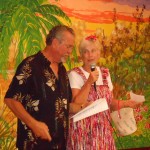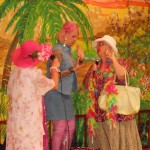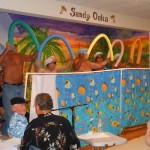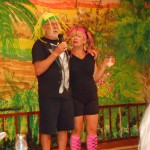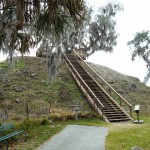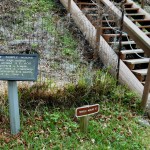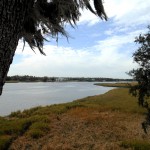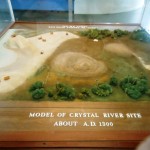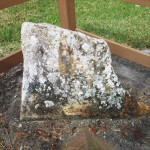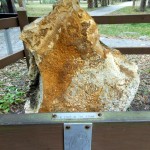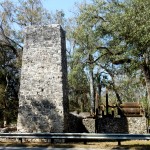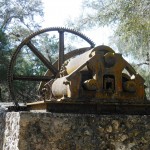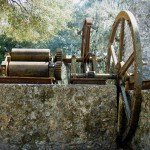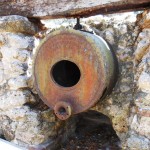You say tomato and I say tomahto. You say potato and I say potahto.
You say Mackinac and I say Mackinaw . . .
The real skinny: The French spelled it with “ac” on the end but pronounced it “aw.” The British heard it pronounced “aw” so they spelled it that way. Whichever way it is spelled, it is always pronounced “aw.”
We were already due south of it at the Heartland Rally, and our home club, the Friendly Maryland Travelers, were heading there for a Rally. Longtime members, we hadn’t joined them for eons because of our cross-country adventures, so it was nice to hook up again. We all stayed in the Mackinaw City Park in sight of Mackinac Island and not far from the Mackinac Bridge across the straits between Lakes Huron and Michigan. It’s a large, naturally-designed, well-maintained park with many sites on the Huron shore. We did group meals, side trips down town, a day-long July 4th party and, of course, a trip over to Mackinac Island itself. We took a jet boat over. There are no cars allowed on the Island except an ambulance. Some of our folks were drawn to a three hour long horse-drawn tourist cart adventure, while others brought their bikes. As we went past the Grand Hotel, biggest and fanciest on the island, we learned they charged gawkers $10 to enter the grounds and look around!
- Downtown Mackinac I. with Tourist Cart
- Mackinac Island
- Horse Barn and Vet’s Office
- The horse-drawn Street Sprinkler
- Jet Ferry to Mackinac Island
- Mackinac Island — view of the coast
- Mackinac Island’s Post Office
- The Grand Hotel
Back on the mainland, we toured the Icebreaker Mackinaw Marine Museum. The ship was commissioned in 1944 primarily to keep shipping lanes open for the transport of raw materials during WW II. She is 290 feet long with three propellers – two aft and one forward – driven by six monster diesel engines. She served until 2006, when she berthed for good in her namesake port and gave way to a new Mackinaw, the slightly smaller WLBB-30. The docent in the engine room when we took our tour was very well versed, and she handled my curiosity thoroughly.
- View off the Bow
- The Bridge
- The Galley
- CPO’s Ward Room
- Massive Engines
- Notice Piston Rod in Foreground!
Another highlight was a spin along the waterfront. Old Mackinac Point Lighthouse is adjacent to Fort Michilimackinac, where a statue tells the story of one of the earliest English inhabitants. After the British gained control of Canada and the Great Lakes in 1760, 22 year old Alexander Henry (1739-1834) made his way down from Montreal to explore the fur trading opportunities. Others followed and continued to use the Fort, abandoned by the French, as a trading post. A year later, the Ojibwe entered the fort, killed all the British and held it for a year. Alexander, however was spared by Chief Wawatam, who adopted him as a son. A year later, when the Ojibwe were repulsed, Alexander was granted a monopoly on fur trading on Lake Superior. After 11 active years, he returned to Montreal and became a merchant. Among his plaudits is the fact that he introduced John Jacob Astor to the Canadian fur trade.
- Old Mackinac Point Lighthouse
- Lighthouse Story
- Alexander Henry Statue at the Fort
- Alexander Henry’s Story
And then we trekked the long span to the Upper Peninsula.

